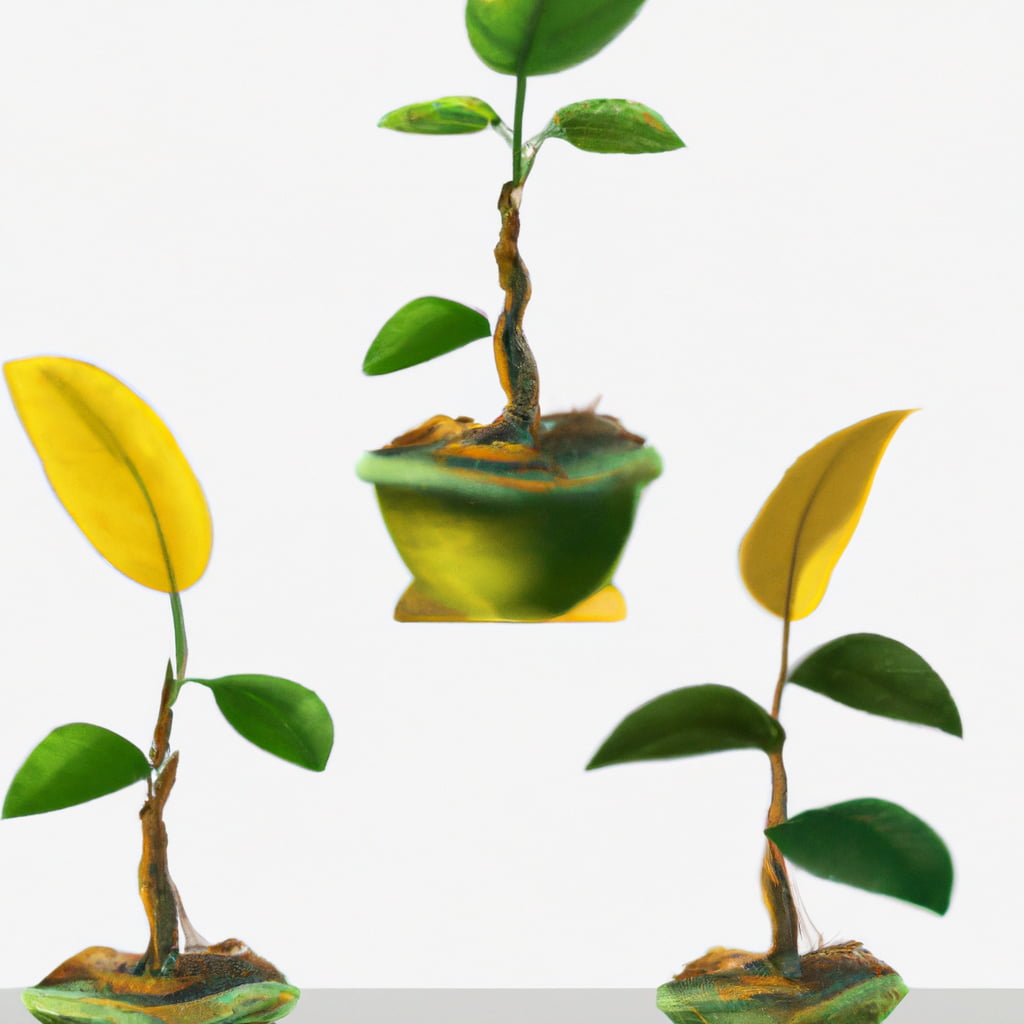Characteristics of Living Things
The defining characteristics of living organisms are discernible by their ability to metabolize and respond to external stimuli in a complex manner. This involves maintaining homeostasis, growth and development, reproduction, response to environmental stimuli, adaptation through modification of behavior or physiology, repair or replacement of damaged tissue – all processes that distinguish life from non-living matter.
Plants fit into this category as they respond to sunlight and other external cues by shifting their energy production from the roots down to photosynthetic leaves. This ensures plants have access to sufficient light energy for efficient photosynthesis while avoiding excess water loss in dry climates by increasing root mass.
Additionally, plants are known for having cell walls containing cellulose and possessing chloroplasts for photosynthesis. These unique traits allow plants to produce their own food through photosynthesis and store it for future use. Furthermore, plants exhibit the ability to reproduce sexually or asexually, further cementing their status as living organisms.
Pro Tip: Plants exhibit unique qualities that make them fascinating study subjects for those wishing to better understand the complexities of living things.
Plants may not have legs, but they sure know how to grow – it’s like watching a silent movie on fast forward.
Plant Growth and Development
Plants exhibit an incredible ability to grow and develop. Understanding the intricacies of their growth and development can help us appreciate their biology better. The growth of plants is largely stimulated by an interaction between external stimuli and internal processes. These processes include photosynthesis, cellular respiration, DNA replication and protein synthesis.
Plants respond to light, gravity, temperature, moisture, nutrients and other environmental factors by adjusting their growth trajectory. This adjustment is known as tropism. Tropisms are directional growth responses that allow plants to adapt to changing environments.
Plant hormones play a crucial role in regulating plant growth and development. Hormones like auxin promote elongation of cells in shoot tips while cytokinin promotes cell division. This interplay between various hormones keeps plant growth and development in check.
Plant growth and development is a delicate process that requires careful management of conditions like temperature, humidity, pH levels and nutrient availability. A healthy environment that meets the plant’s needs will ensure optimal growth and development with minimal stress. Providing proper care to plants by watering them regularly or protecting them from pests ensures that they get the necessary resources for their optimal growth and development.
By understanding how plants grow and develop we can appreciate the importance of maintaining a healthy environment for these organisms. To support plant life we must manage environmental resources carefully while also preventing damage from pests or disease.
“Who knew that the PG rating for plant reproduction involved so much pollination and fertilization talk? It’s like an educational episode of The Bachelor in the garden.”
Plant Reproduction
Plant propagation is crucial for plant sustainability and survival. Involving the transfer of genetic material, it ensures robustness in the next generation. Through various asexual and sexual reproduction methods like budding, grafting, vegetative propagation, pollination, and seed dispersal, plants produce numerous copies of themselves with unique characteristics that aid in adaptation and evolution.
Furthermore, different plant parts like stems, roots, and leaves can contribute to plant reproduction either through fragmentation or spores formation. Understanding plant reproduction mechanisms has significant implications for agriculture and environmental sustainability.
To fully comprehend the importance of plants in ecosystems and how to cultivate them for specific needs, knowledge on their varied reproductive methods is fundamental.
Don’t miss out on learning about the fascinating world of plants by ignoring their importance in our lives. Improve our ecosystem by understanding how plants reproduce.
Who needs a pulse when you have chloroplasts? Physical indicators of plant life.
Physical Indicators of Plant Life
Plants exhibit various unique characteristics that show their vitality. These indicators are apparent and quantifiable qualities that make it possible to discern whether a plant is alive or not.
- Metabolic Processes: Plants possess the capability of conducting photosynthesis wherein they produce glucose through sunlight, water, and carbon dioxide, acting as energy providers. The ability to demonstrate metabolic activities allows plants to grow and fulfill their critical functions.
- Cellular Organization: All living entities contain cells – so do plants. These building blocks are responsible for growth and replication in plants, which is indicative of life processes. It allows them to sustain themselves despite changes in the environments.
- Sensitivity: Plants can sense both internal and external stimuli – such as temperature, light, touch, pollutants, pests – through various pathways. This enables them to respond accordingly and maintain their growth cycle while adapting efficiently.
Furthermore, a major additional factor that points to the vitality of plants is reproduction. They have different methods of propagating such as asexual reproduction (vegetative propagation) where a part of the parent plant develops into an independent entity or sexual reproduction through pollination which leads to seed formation.
A true story about a man named Mike who had turned his house green with indoor plants was once shared by his colleague. She remarked how Mike’s life had changed after he adopted gardening as a hobby since he began nurturing plants in his home office. Mike also felt like he was starting to breathe with his green companions around him all day long.
Plants may seem like silent, unmoving beings, but they’re actually the OGs of the living world – producing oxygen, sustaining life, and making our world a greener place (literally).
Importance of Plants as Living Organisms
Plants are a crucial part of our ecosystem, serving as living organisms that provide life-giving oxygen and play an essential role in maintaining the balance of nature. Their importance is undeniable, with their ability to perform photosynthesis allowing them to turn sunlight into energy, making food for themselves and fueling the food chains of others. In essence, plants represent the foundation of all life on Earth.
Without plant life, there would be no animals or humans. Plants also contribute to soil quality and water conservation by absorbing excess nutrients and preventing soil erosion. They even help regulate climate change through carbon fixation processes that remove harmful carbon dioxide from the atmosphere.
It’s easy to take plants for granted, but we must remember their vital role in sustaining life on Earth. By taking care of our environment and encouraging plant growth, we can ensure a healthier planet for ourselves and future generations.
As remarkable as they are, there are still many fascinating aspects of plant life waiting to be uncovered through scientific research. For example, recent findings have shown that some plants can communicate with each other using chemical signals when faced with insect attacks or other stressors. This discovery highlights just how sophisticated these living organisms truly are.
Plants are not just passive creatures – they can adapt and respond to environmental changes over time in ways that scientists are only beginning to understand fully. By studying them more closely, we can learn valuable lessons about how best to care for our planet.
In Brazil’s Amazon rainforest lies the “Mother tree,” a giant ancient tree around 2000 years old – almost as old as Christianity itself – known locally as ‘the wonder’ due to its age and resilience against natural disasters such as floodings and storms. The Mother tree stands tall at about 200 feet (60 meters) high; it has braved forest fires and deforestation activities while continuing to serve as an anchor point for countless living organisms like birds, monkeys among others relying heavily on the tree for sustenance. The mother tree is a unique example of how vital and exceptionally precious these living organisms are to our ecosystem.
Plants may not have a heartbeat, but they still know how to root for themselves.
Conclusion
Plants are undoubtedly alive, as they possess all the characteristics and traits that define a living being. Starting from their growth, metabolism, response to stimuli, reproduction, adaption, and capability to evolve with time. This ability of plants to convert solar energy into food makes them primary producers on earth.
Furthermore, plants can sense different forms of stimuli such as light, temperature changes, chemical gradients in the soil or air. They respond actively to these stimuli by altering their growth pattern and behaviors. They can also reproduce by either asexual means (such as budding or fragmentation) or sexual means (pollination).
Plants demonstrate a unique form of communication through chemical signaling. They emit volatile organic compounds (VOCs), which are detected by other plants and insects in the surrounding environment. Through this method, they exchange information about potential threats such as herbivores or predators.
Frequently Asked Questions
1. How do we know if a plant is alive?
A: We can determine if a plant is alive by checking for the presence of essential life functions such as growth, reproduction, response to stimuli, and metabolism.
2. What are the signs that indicate a plant is alive?
A: Signs that indicate a plant is alive include the presence of green leaves, stems, and flowers, the ability to grow and change in response to its environment, and the capacity to produce new plant cells and tissues.
3. What is the importance of knowing that a plant is alive?
A: Understanding whether a plant is alive or not is critical for maintaining healthy ecosystems and making informed decisions about agriculture, forestry, and conservation efforts.
4. Can a plant be alive but not healthy?
A: Yes, a plant can be alive but not healthy, as it may be suffering from disease, nutrient deficiency, or environmental stressors that inhibit its growth and reproductive potential.
5. How can we ensure that a plant remains alive and healthy?
A: To maintain a plant’s health and vitality, it is essential to provide it with proper soil, sunlight, water, and nutrients. It is also crucial to monitor for pests, disease, and other environmental stressors and take appropriate measures to prevent or treat them.
6. What happens when a plant dies?
A: When a plant dies, it can no longer perform essential life functions such as photosynthesis and respiration, and its cells and tissues begin to break down and decompose.

A passionate gardener and founder of ForTheLoveOfGardeners.com. She shares her expertise to help you cultivate thriving gardens and find joy in the beauty of nature.
